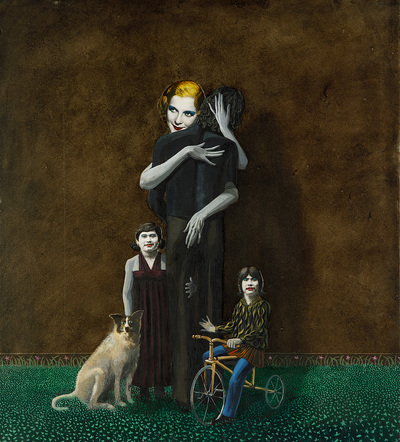Gino Rubert: the beauty of the sinister
The unique style of Gino Rubert, internationally recognized after being chosen to illustrate the famous literary trilogy Milenium, stars in our contemporary art auction on December 18.
Writer, illustrator, cartoonist and painter, the Mexican-born artist Gino Rubert began his artistic career in Barcelona where, after studying Fine Arts, he tried to make his way as an illustrator for magazines, newspapers and publishing houses. However, the great opportunity that would catapult his career would not come until 2008, when he was chosen to illustrate the covers of Steve Larson’s successful “Milenium” trilogy. Since then, Rubert’s work has occupied a privileged place within the artistic panorama, to the point of consolidating his position as one of the most recognized artists of the moment.
The genesis of his unmistakable style is born of multiple references and influences that confirm the polyhedral character of the artist in which the post-impressionist heritage of artists such as Henri Rousseau, Pierre Bonnard, Paul Gauguin or Toulouse Lautrec converge with the Renaissance pictorial tradition and the references of magical realism, giving way to a work where hyperrealism and surrealism intermingle to create scenes as enigmatic and disconcerting as they are strangely beautiful.
Gino’s multifaceted nature is also evident in the technique used, where the boundaries between painting and photography are diluted until reaching an intriguingly ambiguous creative universe that immerses us in the complexities of personal relationships. In this sense, the work in tender represents a magnificent example of the idiosyncrasy of his work, where painting is combined with different collage elements, such as holograms, pieces of fabric or plastic, natural hair or small objects. Likewise, the scenarios represented recreate an unsettling world full of irony and eroticism inhabited by animals, adult-looking child figures and people who look at us inquisitively through which the artist explores almost obsessively the complexities of human relationships and, very specifically, of the sentimental relationships that take place in contemporary society, exploring their conflicts, rhetoric and fragile balances.
In this aspect the figure of women will have a specific weight within his imaginary, representing them as dangerous creatures in which he personifies the duality existing between the beautiful and the sinister, between being loved and dominated. But far from a misogynistic reading, Gino argues that his paintings represent precisely the historical fear that men have harbored in recent centuries regarding women and their struggle for power.






